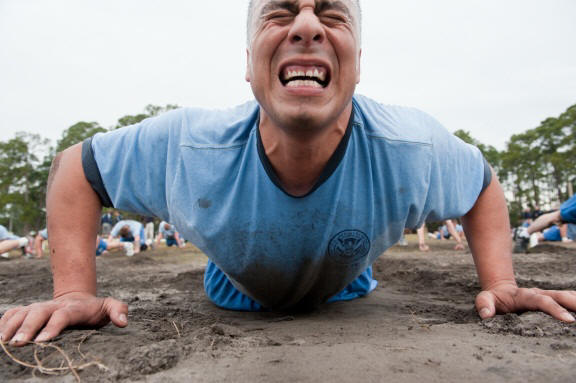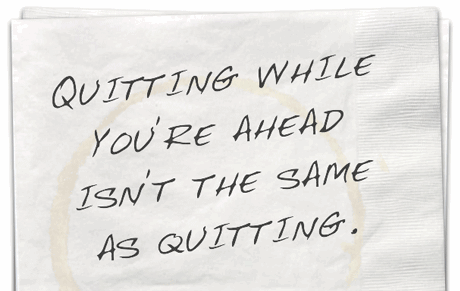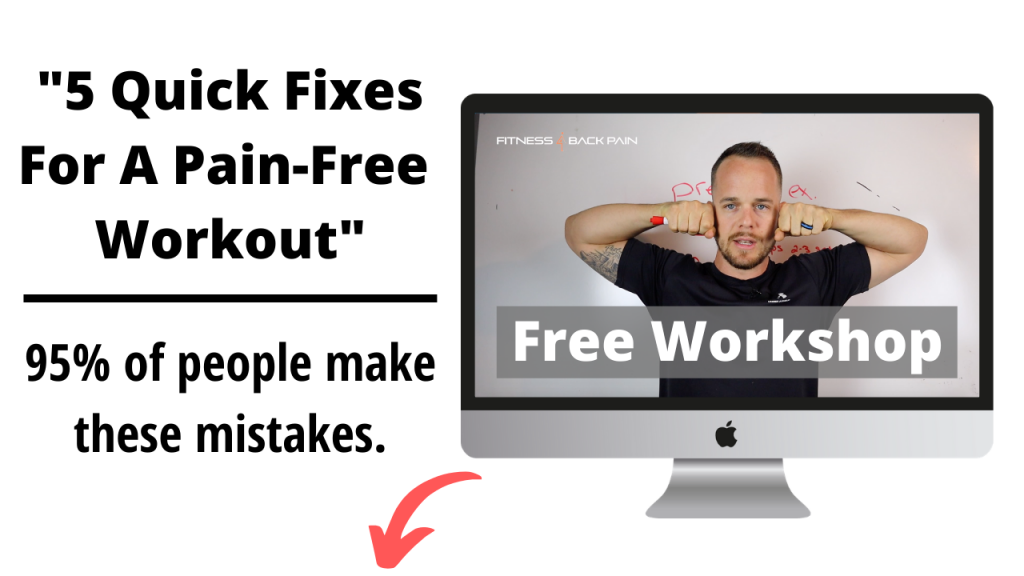When it comes to rehabbing a bad back one of the worst things you can do is train in and around any type of exhaustion. 95% of people fail at this concept because we are wired to think that the only way we are to build endurance is to push our personal limits. When it comes to a lot of things in life this may be true but if you take this way of thinking into your pain management program you will fail.

When it coms to specifics, it always comes down to the individual and what their current issue may be. For example, if you’re dealing with a lot of inflammation then the way you workout is going to be geared to reducing and maintaining a low level of inflammation. If you have a disc issue such as a herniation, your main goal is going to be correcting that issue and exercising in a way where you can correct the herniation as well as preventing any further damage.
Despite the many differences in back pain causes, today I want to focus on one thing we all have in common when it comes to our back pain management. Exhaustion.
This is where we find ourselves pushing past limits we think are going to make us better. We hold the plank for 30 more seconds or do an extra round, set or rep thinking that stronger will make us more pain free.
Bad backs require attention to detail. You’re literally trying to rewire the way your body moves in order to correct whatever it is you have going on. This requires massive amounts of control, patience and attention to detail.
Today I want you to walk away from reading this with 4 things ingrained into your head.
[shareaholic app=”share_buttons” id=”21010787″]
4 Ways to keep Exhaustion Out of Your Pain Management Program
Work with light weight:
We are in the business of rewiring what you have been doing wrong for so long. Whether you have been training for 15+ years or this is your first day in the gym, it’s not about how strong you look or actually are. The only way to relearn and perfect proper movement is to strip the weight away. Starting with the nuts and bolts of proper movement and gradually building up from there. The light weight ensures 2 basic things:
- Nothing outside of yourself is causing poor form or body mechanics
- As you progress your able to grade your improvement off of post workout pain not strength (more on this later)
Slow and Controlled Movements:
Before you can squat properly you need to first master the hip hinge, before you master the hip hinge you need to understand what true core stability and contraction feels like and actually is. Once you have the tiniest glimpse of what these things are you do them over and over and over again until you have reached perfection. I am not just exaggerating, perfection is your ultimate goal.
Your movements should be so fine tuned that it becomes muscle memory where you don’t even have to think about doing it and still nail it. I know for me personally with my ruptured L5-S1 I know what positions will cause irritation and which ones wont. I can squat with good hip hinge but with a weak core contraction and feel discomfort then do the same hip hinge with a tighter all around core and have no pain at all. I have to be constantly training my self to do it the same way every single time.
This takes slow and controlled movements so you can test and adjust while your doing it. If your trying to incorporate bent over rows back into your program you may have to master the hip hinge position until you have zero pain before you even pick up a weight. Once the weight is involved you don’t want to shoot back to your old weight and mess everything up. You want a light weight to allow yourself to go through the motions and test for any painful spots and adjust accordingly. You can’t fine tune movements if you don’t have 100% control while doing them.

Quit While Your Ahead:
Back in the day I would spend almost 2 hours in the gym working out. Despite how I felt I would push through and deal with the pain later. All I wanted was to get stronger. I know for the more experienced lifters this can be hard but your 1st day in the gym with a back pain relief plan needs to be looked at like your first day in the gym EVER. If you consider yourself a “new guy/gal” listen up. Naturally you are going to gravitate to more time on the treadmill or bike simply because it’s “safe”. Thats awesome that you’re “getting to the gym” like your doctor suggested but you have a lot of work to do!
Your body will play tricks on you sometimes. You can go into the gym with back pain spend 45 minutes exercising and feel great then two days later your Googling what maximum dosage of ibuprofen the human body can handle in one day. I know, I have been there myself!
The key to preventing any issues while getting started is to quit when you think you have a little more left. Get your mind off of the weight, what people might think of you, the time spend in the gym or the number of exercises you did that day. Get in there, work on your key movements and get out. The key to building the endurance needed to support a healthy back is to reach perfection and be able to maintain it through out the workout as if you had just walked into the gym. The whole goal of endurance training when it comes to back pain is repetition with complete control day in and day out. Dr. Stuart McGill goes into talking about how a lot of the modern day athletes would be accused of under training to the average person. Thats simply because the fitness industry has poisoned our minds with garbage standards and fake performance expectations. We are skipping over proper mechanics and basic human movement patterns to give us a false sense of physical fitness and performance.
“The fitness industry has poisoned our minds with garbage standards and fake performance expectations. We are skipping over proper mechanics and basic human movement patterns to give us a false sense of physical fitness and performance.”
Let your pain be the judge:
This is my favorite teaching point when it comes to exercising with back pain. During the first few minutes of a workout you can allow the pain to be the judge of what to do but about 30-45 minutes in, your endorphins start kicking in, your blood is pumping and things just get a little more loose. The pain is gone! Two days later your back is so inflamed you swear cutting your spine out with a tooth pick would feel better than what you’re going through.
My rule of thumb is to always start light and do way less than I would normally do if I wasn’t in any pain. Allow two days to go by and if my pain didn’t increase than I would hit it again the following week. The day the pain increases I would tone it back the following week and stick to that weight and dial in technique for the next two weeks. I would only increase weight if I could maintain a similar level of discomfort or it got better.
I know this stuff sounds boring and you want to fast forward and get to the pain free part but thats not reality. Think about it. You could go in and get cut by a doctor and be out of the gym for 3-4+ months and still have the same issues getting back into it once your cleared OR you can spend the next 3-4+ months re-grooving all the nastiness you have and come out better then you did before. That’s a no-brainer for me.
In Closing…
If there is anything I want you to take away from today it will be to never feel like you have to push yourself to improve. Recovering from back pain is an endurance race. It’s one of those wax on wax off kinda things. You will keep doing it over and over often wondering if it’s actually going to change anything and before you know it you will begin to notice less and less pain. You’re giving your body the chance to repair itself rather then continuing to beat it up thinking squats and dead lifts are what strengthen your back to begin with (that’s garbage advice by the way)
Like I always say. Listen to your body and do what fits your specific situation!
I want to meet one of your friends who goes to the gym to exercises yet still have chronic back pain. Share this article with them! I would love to meet them!
ttys,
William


Very insightful article, and really good advice
Thanks so much for reading! Let me know if there is anything I can do!